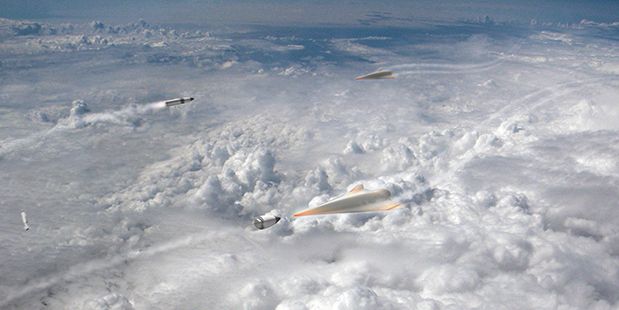Boagrius
Well-Known Member
Yes it seems like this area is really starting to take shape.
Question to those in the know - how feasible would a hypersonic medium range AAM be? Occurs to me that an AMRAAM-esque missile that can cut down a ~10-25nm distance in the blink of an eye (so to speak) could be extremely potent when paired with VLO assets like F22 or F35. Much has been made of Mach 4+ ramjet/VFDR missiles like Meteor and their enhanced NEZ but I would have thought a hypersonic BVR AAM may potentially leapfrog them capability wise. Could render a lot of "red team" effort into EW/EA (softkill) countermeasures rather impotent due to the drastic response time reduction.
Just musings on my part of course - I imagine there would be significant challenges associated with hitting a fast moving, potentially maneuvering target with a missile like this. Add to that size constraints imposed by the imperative of internal carriage on VLO jets and I am under no illusions as to how challenging it would be. More wondering if it is something we are ever likely to see or whether there is other technology in the pipeline that is more likely to occupy the "post-AMRAAM" space.
Question to those in the know - how feasible would a hypersonic medium range AAM be? Occurs to me that an AMRAAM-esque missile that can cut down a ~10-25nm distance in the blink of an eye (so to speak) could be extremely potent when paired with VLO assets like F22 or F35. Much has been made of Mach 4+ ramjet/VFDR missiles like Meteor and their enhanced NEZ but I would have thought a hypersonic BVR AAM may potentially leapfrog them capability wise. Could render a lot of "red team" effort into EW/EA (softkill) countermeasures rather impotent due to the drastic response time reduction.
Just musings on my part of course - I imagine there would be significant challenges associated with hitting a fast moving, potentially maneuvering target with a missile like this. Add to that size constraints imposed by the imperative of internal carriage on VLO jets and I am under no illusions as to how challenging it would be. More wondering if it is something we are ever likely to see or whether there is other technology in the pipeline that is more likely to occupy the "post-AMRAAM" space.





